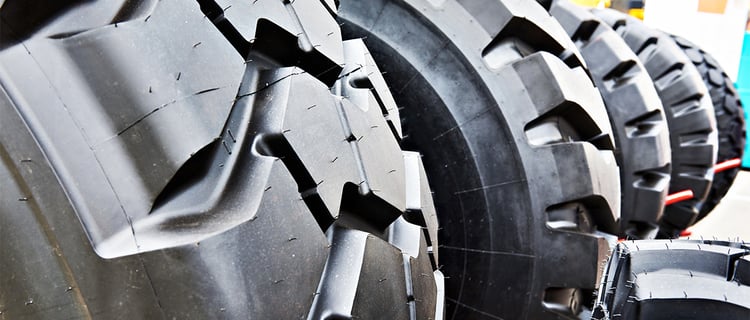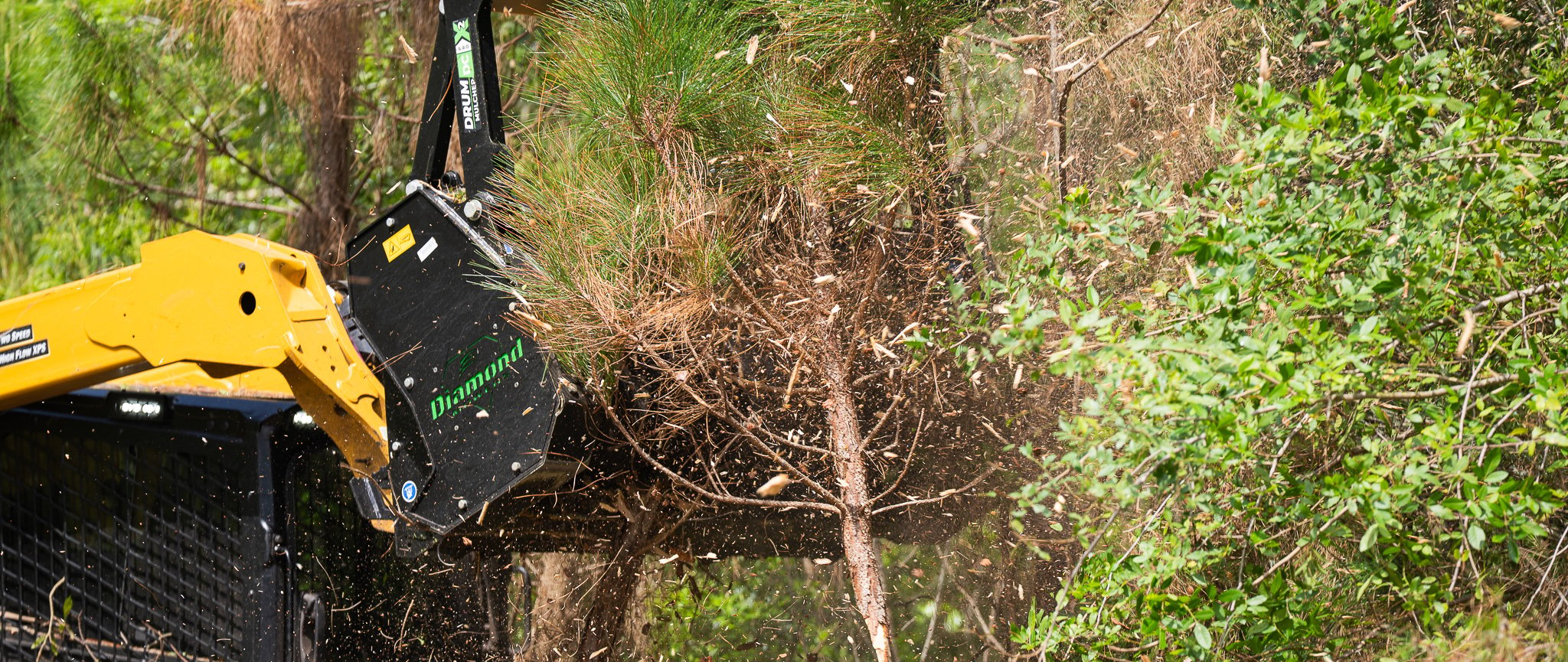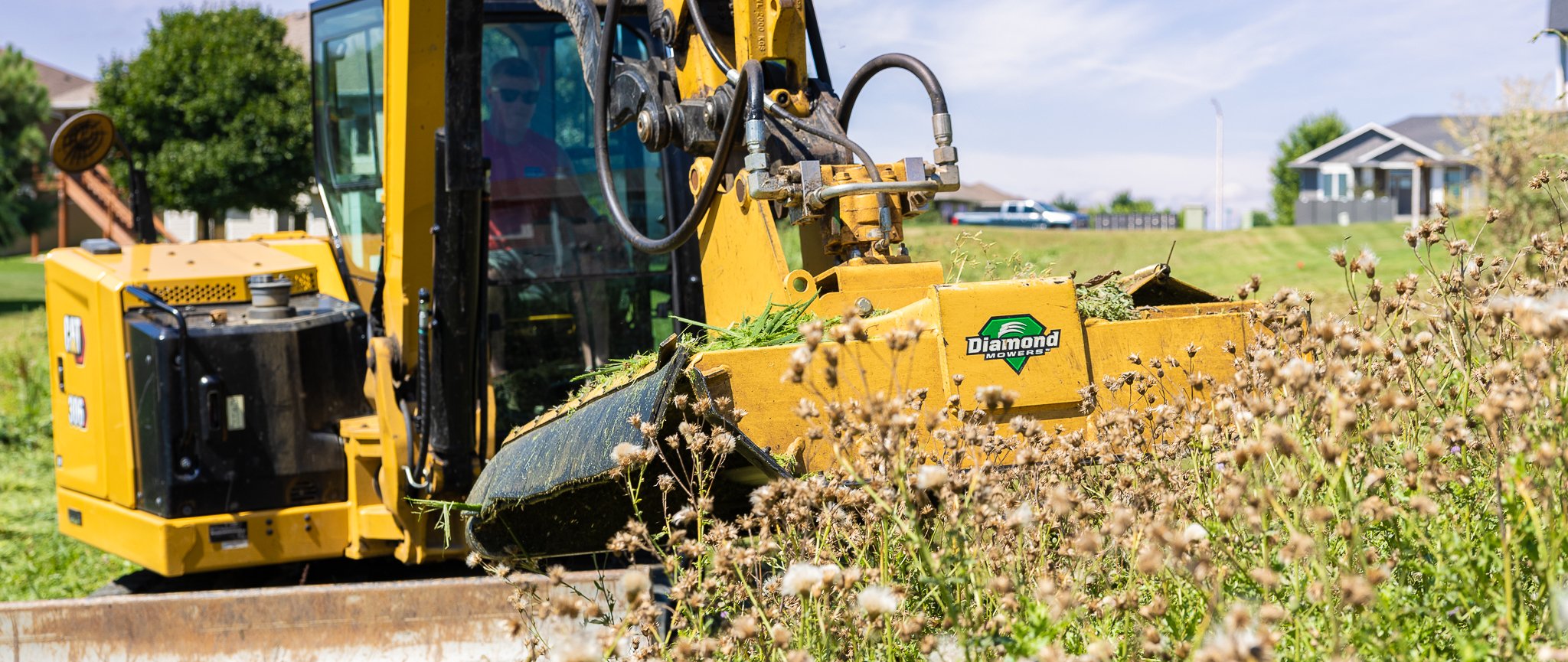Tractor Mower Tires Selection
Aug 03, 2020 . 6 min read

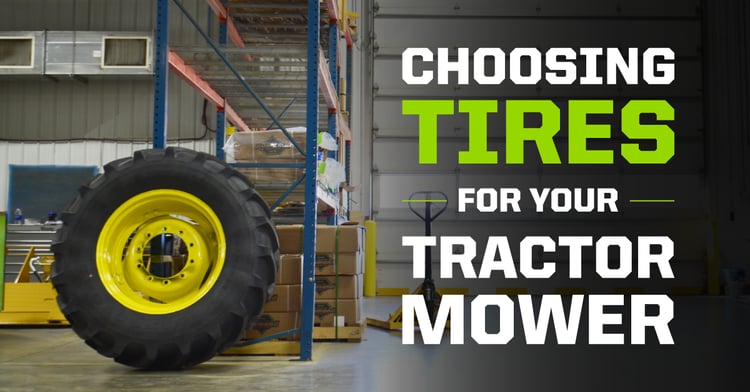
When choosing the right specs for your new mowing tractor, or replacing worn-out tires on an existing tractor, it’s important to select the right tires for your mowing application. Tires that are too big might rub on components. Tires that are too small might allow the frame to drag on the ground as you enter and exit a ditch. Some types of tires perform better than others. In this article, we look into important items to keep in mind during the selection process.
Facts and Misconceptions of Tractor Mower Tires
Since the release of Tier 4 emission requirements in 2011, there are more parts on a tractor, particularly between the cab and front tires. Since Diamond Mowers and other mower companies generally mount frames, boom pivots, and other structural components in a “mid-mount” location, the space around the front tires is at a premium. This means that the correct tire size is critical for clearance and adequate steering of the mower.
Two-wheel drive tractors do not pose a problem with mounted mower applications as the smaller diameter of those tires allow for more clearance. Four-wheel drive or mechanical front-wheel assist tractors present great complexities. These larger diameter tires mean that the positioning of the tires on the front axle and the size of the tires can make a massive difference in the tractor’s turning ability.
A common misconception is that you can get better turning and stability by pushing the front tires out further on the axle.
There are two problems with this process:
- The front axle pivots in the center. Any added stability doesn’t come into effect until the axle stops moving or when the axle hits the bump stops.
- Pushing the tires out, placing them outside of the turning “pivot.” A left or right turn will also swing the whole tire assembly forward and back, potentially causing contact with the added frame or hoses.
In contrast, moving the centerline of the tires directly over the pivot point will cause the tires to only turn directly left and right, allowing for a much closer space between the tire and frame assembly.
Types of Tractor Mower Tires
Agriculture tires are the most common and usually standard on tractors. They serve a general purpose and are often the most cost-effective option for most tractor owners. There is also a variety of specialty tires available as options that should be considered when talking about specific applications.
Agriculture tires (also called R1 tires) - are designed to pull a farm implement through loose ground effectively. The angled lugs and lower air pressures work to increase traction and decrease soil compaction in farm and field applications. Agriculture tires are available in either radial or bias-ply construction. Bias-ply tires have been around for a long time and are a tried and true design; they carry weight well and are an inexpensive solution.
The downside of bias-ply tires is their construction contributes to a rough ride, and they will wear out quicker than a radial tire. Radials tires are a newer design that allows the sidewall to flex more. This equates to a smoother ride and less compaction in loose soils, in addition to a longer life. However, the sidewall flex does not carry weight as well, and the tire generally costs more than a bias ply tire.
Tractors with a mounted mower have added weight, particularly on one side, and frequently travel only on the hard surfaces of a highway or gravel road. This added weight requires an increase in inflation pressures to carry the heft of the mower and prevent sidewall damage. This, in addition to running mostly on roads, promotes accelerated tire wear. Since radials are readily available and relatively inexpensive, they are by far the most popular style of tire currently used today. Nevertheless, other choices should be examined, such as an R4 industrial type tire.
Industrial tires or R4 tires are constructed from harder rubber compounds than regular tractor tires, and the tread design is more “blocky”. This is the type of tire that you might find on a backhoe or a wheel loader. The inherent design of this type of tire carries has a higher load index, which means it will carry loads better than an agriculture tire on hard surfaces and will also have a longer tread life. What usually turns customers away from this tire though, is the price.
An R3 tire design is commonly called a turf tire and utilizes small blocks for traction. These are great tires for preventing turf damage, have a great ride, and are frequently used in golf course and municipal park applications. Still, poor traction in wet conditions and reduced availability in larger tractor sizes prevents this style from being widely used for roadside mowing.
An excellent option for mowing applications is a hybrid tire that is a cross between all three of these types of radials. Manufactured by several different companies, this type of tire has the traction of an R1, the comfort of an R3, and the load-carrying capacity and tread life of an R4. These tires are very popular in Europe and are gaining popularity in the US, but cost two to three times that of an agriculture tire. The best hybrid tires are those that combine comfort, traction, and load-carrying capacity. These tires last much longer than standard agriculture tires and can pay for themselves over their lifetime.
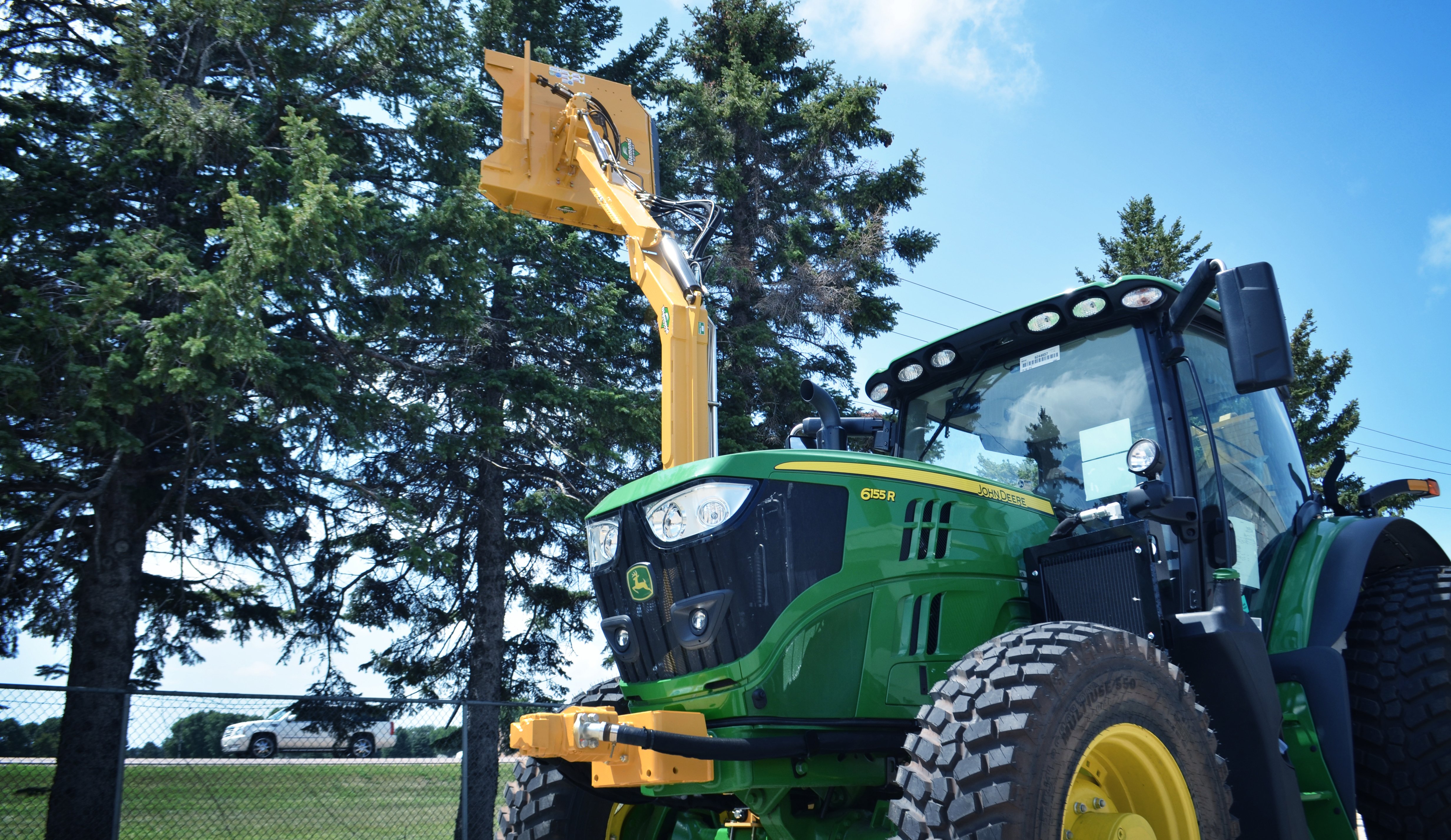
Application for Your Diamond Mower
When determining what tires you might need for your new Diamond mower setup, we have some considerations. To have enough clearance for a boom swivel, draft beam, hoses, etc., the maximum front tire size has a height limitation. This specification is spelled out in our Tractor-Mower Configurator.
On a front-wheel assist tractor, one cannot simply change the front tire size without considering the rear tire size because the tractor’s gear ratios might be affected. Choosing a tire too far outside of the recommended range will cause the gears to bind and damage the front differential.
When choosing tire sizes and types for a new tractor, or replacement for an existing mower setup, there are some important things to keep in mind. If the tractor is operating primarily in road ditches or fields, standard lug ag tires are an excellent choice. They provide great traction on varying terrain and are relatively inexpensive.
If the tractor usually operates on hard surface roads, ag tires still work well, but keep in mind that they will wear out quickly. Heavy users can expect to replace front tires up to twice a season and rear tires every season.
Tire Positioning
Whichever tires you choose, the front and rear tires must be set correctly. Diamond specifies that the rear tires are set all the way out – as wide as they will go – in most applications. This provides added stability and room for a fender-mounted hydraulic tank on the left and a travel rest weldment on the right. In many cases, we will even add a wheel spacer to increase the clearance of these components.
The front tire position is critical and can affect the turning ability of the tractor. If the front tire position is too far in then, the tires will rub on the tractor frame and hoses. If they are too far out then, the tires can run into the boom swivel, draft beam, or other components.
The best solution is to find the perfect balance of the two tires, where the operator gets the best possible turning ability, and the tires clear everything.
Mounting mowers onto tractors is just as much art as it is a science. The overall goal is throughout the full range of motion, there is no point where the tires will touch anything.
The following process should be completed by the installing dealer or at the factory during installation, but it should be checked or adjusted if new tires are mounted.
- The first step of the process starts after the mower is completely mounted on the tractor. Turn the tires left and right to ensure they miss whatever components are directly behind the tire. If it touches, the tire will most likely need to be adjusted inward toward the tractor's centerline. In essence, the closer to the "pivot" point of the hub, the more directly the tire will turn back and forth, rather than swing forward and backward.
- Next, the tractor is raised to allow the axle to swing from bump stop to bump stop freely. With the axle against a bump stop, turn the tires furthest to the right then left. This is the most extreme possible position the tires can be in (think of turning hard to the left and climbing out of a ditch). If the tires hit frame components or hoses at any time, you can adjust the steering stops and/or install oscillation stops. An oscillation stop is a block installed between the axle and tractor frame to prevent the axle from swinging as far.
Whenever anything is adjusted on the tractor, make sure to use Loctite where applicable. Also, be sure to torque lug nuts and stop bolts correctly. No one wants the damage (and embarrassment) of a tire falling off in the middle of a busy highway.
Summary
The best solution for finding the ideal tires for a mowing tractor will vary person by person. Frequent use in areas where traction is required or budget constraints might mean that R1 tires are your best bet. Heavy driving on concrete or asphalt roadways might mean an R4 industrial style tire or hybrid will be a better option. Whatever the solution, your local tractor or tire dealer can help you choose what will work best in your application.
As always, Diamond is here to help. Contact your local Diamond dealer, Regional Sales Representative, or the Customer Service department if you have any questions.

